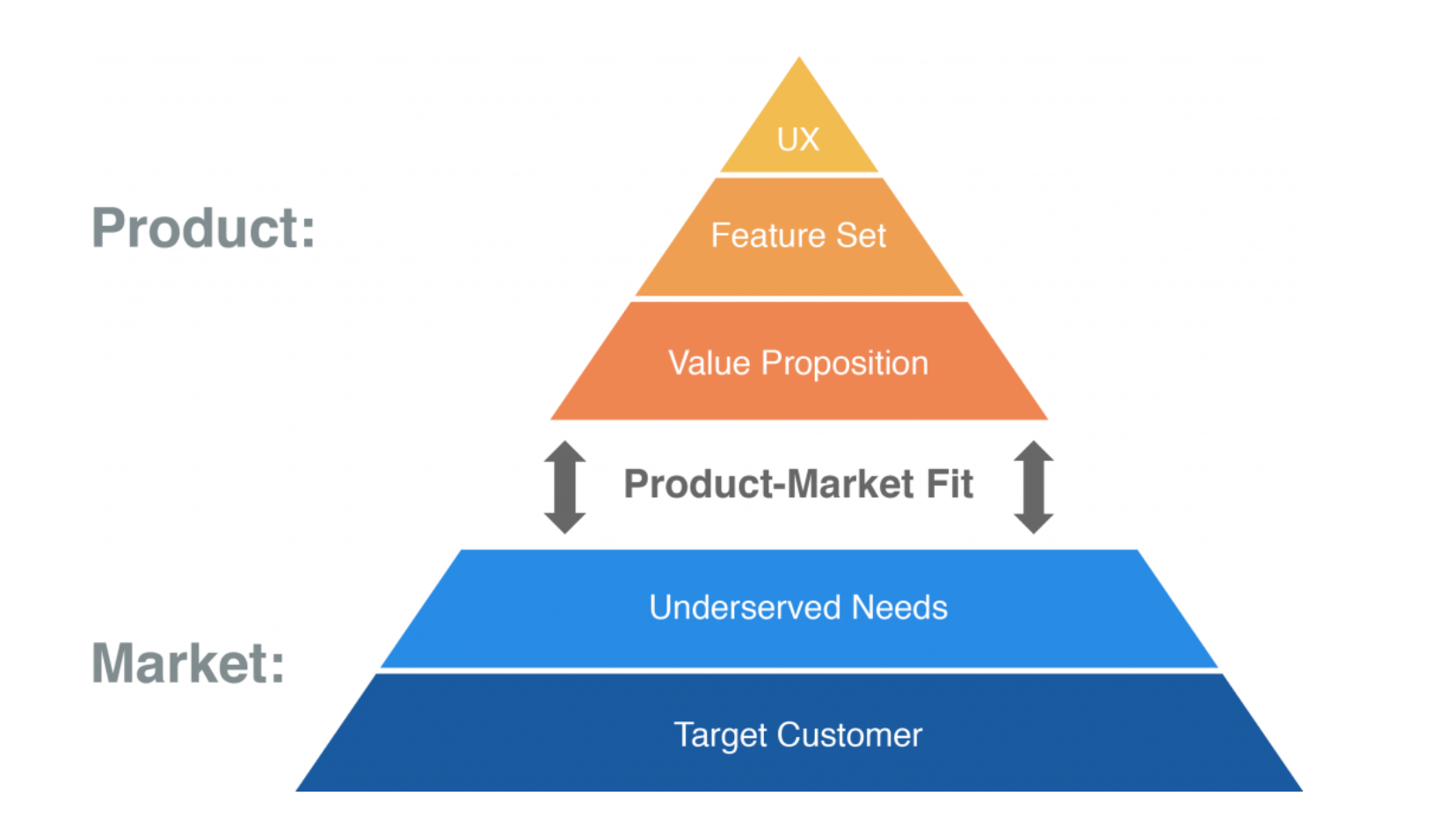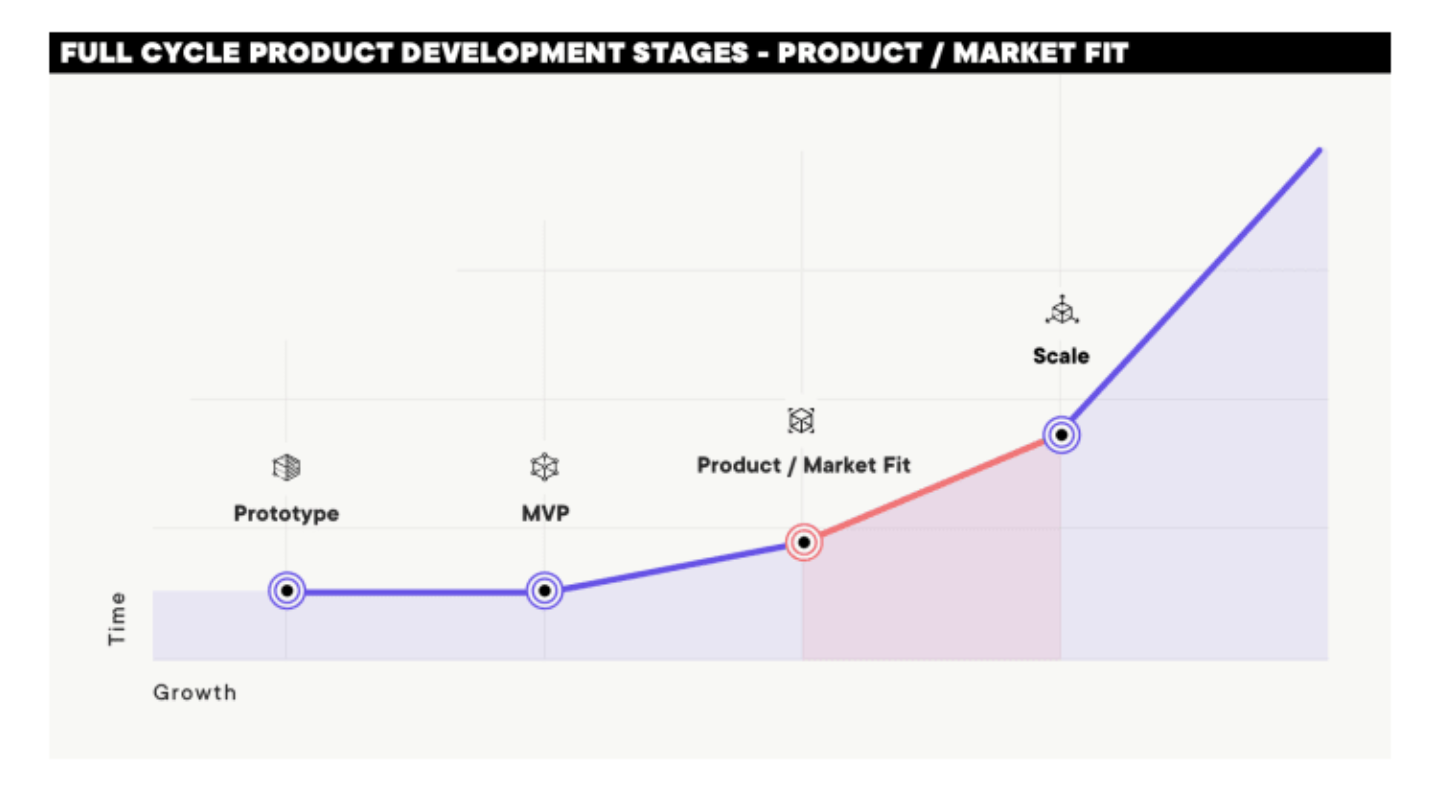Calling all SaaS trailblazers on the brink of breakthrough! If the elusive quest for product-market fit (PMF) has you in a bind, you’ve just hit the motherlode.
Dive into this masterclass where we unpack the secrets to unlocking, assessing, and locking down the product-market fit for your SaaS venture. We’re cutting through the noise to bust myths, tackle the hurdles, and lay out the winning playbook to catapult your startup into the stratosphere.
Don’t let this golden ticket to SaaS startup stardom slip through your fingers!
- Key Insights
- The Crucial Quest for Product-Market Fit in SaaS Ventures
- How to Find Product-Market Fit in SaaS Startup Ventures
- Understanding the Core Value Hypothesis for Product-Market Fit
- Structured Pathway to Achieve Product-Market Fit for An SaaS Product
- Debunking Myths About SaaS Product Market Fit
- Challenges in Determining Product-Market Fit In a Go To Market
- Strategies for Achieving and Maintaining Product-Market Fit In Your Target Market
- Key Indicators of Successful Product-Market Fit
- Mastering the Discovery Call: Rampd’s Sales Framework Simplified
- Sailing the SaaS Seas with the Pirate Metric Framework
- More Metrics Unveiling the Product-Market Fit Landscape
- The Role of Product-Led Growth and Product Development in Product-Market Fit
- Deciphering and Tracking Product-Market Harmony in the SaaS Startup Realm
- Overcoming Challenges and Perspectives on Product-Market Fit
- Conclusion
Key Insights
- Product-market fit isn’t just a milestone; it’s the journey of pinpointing and proving your SaaS offering’s fundamental worth.
- Far from a “set it and forget it” achievement, it demands relentless pursuit, fine-tuning, and evolution based on market feedback.
- To hit that sweet spot of product-market fit, zeroing in on your target audience, leveraging both qualitative and quantitative insights, and staying agile enough to iterate are non-negotiables.
- True signs you’re on the right track include staying in sync with customer needs, deeply understanding the challenges they face, maintaining active dialogues with your user base, and leaning on metrics and methodologies like the Pirate Metric Framework to steer your course.

Are you striving to achieve the perfect SaaS Product-Market Fit? Darren, CEO of Rampd, offers a battle-tested framework that breaks down the intricacies of finding, measuring, and maintaining Product Market Fit for your SaaS startup. Gain the confidence to navigate this critical phase easily and propel your startup to new heights. Book a call with Darren today and embark on your journey towards SaaS success.
The Crucial Quest for Product-Market Fit in SaaS Ventures
The chase for that elusive product that fits the market in the SaaS industry isn’t just important; it’s absolutely critical to the lifeblood of your startup. It’s undeniable proof that your solution isn’t just another idea floating around but a vital answer to a pressing need for a substantial audience eagerly waiting out there.
Diving into understanding your target market with precision and depth is where the magic starts. This journey isn’t about scratching the surface with basic market research. It’s an in-depth mission to unearth the genuine challenges and needs your potential customers face, guiding your product’s direction and development.
Think of your value proposition as your beacon in this quest. It’s not merely a bunch of words but a powerful declaration of the unique benefits and solutions your product brings to the table. When you’ve hit that sweet spot of product-market fit, customer acquisition shifts from being a challenge to a natural outcome of your market resonance, catapulting your growth to new levels.
But the work doesn’t stop there. The SaaS landscape is constantly shifting, and staying connected with your customer base through their feedback is key to keeping your product ahead of the curve. It’s about being proactive, not just reactive, ensuring your product evolves to meet and anticipate the future needs of your market.
Achieving product-market fit isn’t just a milestone—it’s the start of a continuous cycle of growth, innovation, and adaptation. It’s what separates the fleeting ideas from the market-defining successes. Let’s embrace this journey with the determination to not only reach but continuously redefine our product-market fit.
How to Find Product-Market Fit in SaaS Startup Ventures
There is nothing more important for your SaaS startup than finding Product-Market Fit (PMF). PMF represents that sweet spot where your product perfectly aligns with the desires and needs of your intended market. This journey is akin to navigating through the unpredictable currents of the market, aiming to steer your SaaS vessel into the haven of growth and viability. Here’s an exploration of why PMF is pivotal for every SaaS adventurer:
- Blueprint for Product Evolution: PMF is your guiding star to improve your product or when creating a new product. It’s about sculpting a solution that not only addresses but anticipates your audience’s unique challenges, ensuring your market sees undeniable value in your offering.
- Calibrated Expansion: Rushing to scale without anchoring in PMF is like setting sail in a storm. PMF serves as your weather gauge, signaling when it’s time to broaden your horizons without risking being capsized by market indifference.
- Loyalty and Longevity: A product that resonates with the market doesn’t just attract potential customers — it turns them into loyal champions who are willing to pay for good quality, ensuring your product remains relevant and revered.
- Adaptation and Agility: In the ever-shifting sands of the market, PMF isn’t a static achievement but a continuous quest. It demands a keen ear to the ground and the flexibility to evolve, ensuring your product remains in harmony with market dynamics.
- A Magnet for Investment: A strong PMF can attract potential investors by signalling a venture with deep market insights and a product that’s passed the market litmus test.
- Distinctive Advantage: Amidst the crowded SaaS arena, a robust PMF can be your flag of differentiation, marking your territory in a competitive landscape.
- Streamlined Revenue Flow: PMF is the key to unlocking consistent revenue, converting erratic sales into a reliable income stream.
When you think you have achieved Product Market Fit in the SaaS market, be careful: your SaaS journey might just be beginning. What I have found when helping over 200 founders is that finding PMF is a continuous engagement with the market. It’s a commitment to innovation and responsiveness that paves the way for enduring success and market relevance.

Understanding the Core Value Hypothesis for Product-Market Fit
Understanding the core value hypothesis is crucial for achieving product-market fit. In the world of SaaS startups, finding that sweet spot where your product meets the needs of your target market is essential for success.
To achieve product-market fit in a go to market, you must thoroughly understand your potential customers’ specific product needs. This involves conducting good market research, analyzing competitors, and identifying your target market’s pain points. Once you understand these factors, you can build a business model that effectively addresses those needs.
Measuring product-market fit through metrics such as customer acquisition, activation, retention, churn rate, revenue generation, and organic growth is important. By continuously evaluating and adapting based on these indicators, you can ensure that your product remains aligned with your target market’s needs and maintains its appeal to paying customers.
Structured Pathway to Achieve Product-Market Fit for An SaaS Product
Embarking on the quest for SaaS Product-Market Fit necessitates a methodical approach. It’s not merely about launching a product but orchestrating a symphony of market research, customer feedback, and iterative improvements. This section defines a structured pathway to navigating the nuances of achieving PMF in the SaaS sphere.
- Identify Your Target Market: Begin by elucidating who your ideal customers are. Understanding the demographics and psychographics of your target market lays the groundwork for a product that resonates with market needs.
- Understand the Market Needs: Dive deep into the pain points and desires of your target market. It’s essential to have a clear vision of what problems your product aims to solve.
- Create a Value Proposition: Craft a compelling value proposition that articulates the unique value your product delivers. It should resonate with the identified market needs and set you apart from the competition.
- Develop a Minimum Viable Product (MVP): Create a Minimum Viable Product to test the waters. An MVP allows you to gather feedback and validate your assumptions with minimal resources expended.
- Gather and Analyze Feedback: Engage with early adopters to collect feedback. Utilize this feedback to understand what works, what doesn’t, and where to improve.
- Iterate and Improve: Employ an iterative approach to product development. Continual iterations based on feedback help refine the product and inching closer to PMF.
- Measure Product-Market Fit: Establish metrics to measure PMF. Metrics like customer satisfaction, churn rate, and user engagement are critical in assessing the alignment between your product and the market.
- Optimize Your Marketing Message: Ensure that your marketing message is clear, compelling, and resonates with your target market. A well-crafted message amplifies the reach and acceptance of your product in the market.
- Scale Wisely: Once a reasonable degree of PMF is achieved, plan your scaling strategy. Scaling too early without a solid PMF could be detrimental, while scaling too late could miss out on market opportunities.
- Maintain Market Alignment: The market is not static; hence, maintaining PMF is an ongoing endeavor. Stay abreast of market changes and be ready to pivot your product or strategy as needed.
The pathway to achieving Product-Market Fit combines meticulous market understanding, customer engagement, iterative development, and intelligent scaling. Each step in this structured pathway is instrumental in steering your SaaS venture closer to a robust Product-Market Fit, setting a strong foundation for sustainable growth and market leadership.

Debunking Myths About SaaS Product Market Fit
Beware of the myths surrounding product-market fit. It’s rarely a dramatic, unmistakable milestone where everything clicks into place. Nor is it a one-and-done trophy for a SaaS business in its early stages to display proudly and forget. The reality is far more nuanced.
The first myth you need to debunk is the idea that reaching product-market fit puts you beyond the reach of competition or secures it forever. That’s dangerous thinking. Organic growth and preserving that fit demands unending vigilance and flexibility.
To determine your product-market fit, it’s crucial to dive deep into the desires and dilemmas of your target market. Starting with a clear understanding of your primary audience lays a solid foundation in the initial stages. Engage in rigorous market research and gather user insights to challenge and refine your hypotheses. A targeted marketing approach is key to drawing in new users while keeping the loyalty of current ones.
The other myth you should dispel is that you can find a strategy and use it forever. Sticking to old strategies is like walking in circles. Be prepared to pivot as market dynamics evolve, and new competitors emerge. Tackle customer turnover head-on by diagnosing its causes and tweaking your product to keep it relevant and desirable.
Achieving and maintaining product-market fit is like navigating an ongoing expedition, requiring a steadfast dedication to adapting your product and strategies to align with the evolving needs of your market, all while focusing on growth and bolstering recurring revenue from your customer base. It’s a continuous quest for alignment, insight, and connection with the needs of your audience.

Challenges in Determining Product-Market Fit In a Go To Market
When determining if your solution solves a real problem for a large enough market, it can be challenging to assess product-market fit due to various factors and metrics that need to be considered.
Also, for those who might not know, “go to market” refers to a company’s strategic plan outlining how it will launch and promote a new product or service to its target audience, focusing on channels, customer acquisition, and competitive positioning. It’s a comprehensive blueprint designed to navigate the complexities of entering the market, ensuring the product reaches the right customers effectively and efficiently.
Here are three key challenges in determining product-market fit for your SaaS startup:
-
- Understanding the target market: Identifying the right market segment is crucial in achieving product-market fit. It requires thorough research and analysis of customer needs and pain points.
-
- Retaining customers: Customer retention is a critical factor in measuring product-market fit. Your ability to keep customers engaged and satisfied with your product indicates whether you are effectively meeting their needs.
-
- Driving organic growth: As an early-stage SaaS company, acquiring more customers within your target audience is essential for achieving sustainable growth. Organic growth through word-of-mouth referrals and positive customer experiences demonstrates strong product-market fit.

Ready to revolutionize your SaaS startup with rock-solid Product-Market Fit? Discover Rampd’s distinct approach that goes beyond conventional teaching and consulting. Our tailored strategies have driven remarkable revenue surges, with some clients surpassing the $1M milestone. If you’re determined to streamline your sales process, achieve predictable revenue, and establish a lasting Product-Market Fit, schedule a call with Darren, CEO of Rampd, today.
Strategies for Achieving and Maintaining Product-Market Fit In Your Target Market
To secure and preserve product-market fit, ensuring your SaaS solution aligns seamlessly with your target market is paramount. Then, actively engaging with customer feedback and relying on your intuition are vital tactics for achieving and upholding product-market fit in your SaaS enterprise.
Pinpointing your target audience enables you to customize your product to effectively address their unique requirements and challenges. Leveraging customer feedback is instrumental in assessing how well your product satisfies those needs, facilitating timely and appropriate modifications. Trusting your gut instincts empowers you to make decisions that are grounded in your comprehensive understanding and insights.
The agility to pivot is essential, allowing you to respond adeptly to shifts in market dynamics when needed. Moreover, eschewing abrupt changes that are purely reactive to market demands ensures that your SaaS product’s foundational value proposition remains intact, even as you adapt to meet your customers’ evolving expectations.

Key Indicators of Successful Product-Market Fit
You’ll want to regularly engage with your customers to gain valuable insights into how your PMF is going. By actively interacting with your customers, you can gather important information about their needs, pain points, and preferences, allowing you to make data-driven decisions that will help you better align your product with the market.
Here are three key indicators that can help you measure and maintain product-market fit for your SaaS startup:
- Customer Satisfaction: Conduct surveys, interviews, and feedback sessions to gauge customer satisfaction levels. High satisfaction indicates that your product is meeting their expectations and solving their problems.
- Usage Metrics: Monitor user engagement metrics such as active users, session duration, and feature adoption rates. A steady increase in these metrics suggests that customers find value in your product and continue to use it regularly.
- Referrals and Recommendations: Measure the number of referrals or recommendations from existing customers. Positive word-of-mouth indicates that your product delivers value and creates loyal advocates who are willing to promote it.

Mastering the Discovery Call: Rampd’s Sales Framework Simplified
In the sales odyssey, the discovery stage is paramount, acting as the crucible where potential buyers are distinguished from mere window shoppers. Botch this, and you’re likely to see deals disintegrate or vanish, especially as they teeter on the funnel’s edge. Amidst the cacophony of complex sales methodologies, Rampd champions clarity and simplicity, streamlining the path to conversion. Remember, confusion lengthens sales cycles, while mastery of the discovery call paves the way to victory.
Visualize the sales process as a wheel: the discovery call is the hub vital for propelling deals forward, with other stages forming the spokes.
Here are the five pivotal stages in most sales journeys:
- Lead Generation (Spoke)
- Discovery (Hub)
- Demo (Spoke)
- Scoping / POC (Spoke)
- Negotiation / Close (Spoke)
The qualifying beacon we guide our clients by is B.A.N.T.:
- Budget: Understanding their budget and resources allocated to address the issue.
- Authority: Identifying decision-makers (DMs) and their decision-making process.
- Needs: Pinpointing their needs, use cases, and pain points.
- Timing: Determining when they’re ready to proceed if intrigued by the offer.
The objective of the discovery call is to mine this information and tailor the buying journey to the customers’ specific needs.
Here’s the formula I teach all my clients. Follow these five steps to ace the discovery call:
- The Preamble: Set the stage for the call, outlining the process and establishing authority.
- Identifying B.A.N.T.: Employ targeted questions to uncover budget, authority, needs, and timing.
- Reiterating the Information: Reflect the gathered intel back to the prospect, showing you’ve listened and understood.
- Communicating Value: Briefly demonstrate how your product addresses their needs, whetting their appetite for the demo.
- Scheduling the Demo: Seal the discovery call by booking the demo and cementing it with a calendar invite.
By adhering to this framework, you not only streamline your sales process but also significantly enhance your chances of closing the deal.
Ready to transform your sales journey and close deals like never before? Book your discovery call with Darren today and unlock the secrets to sales success. Don’t miss this chance to elevate your SaaS startup with expert insights and tailored strategies. Click here to schedule your session and start your journey to sales mastery with Darren’s guidance. Let’s make your sales process your strongest asset.
Sailing the SaaS Seas with the Pirate Metric Framework
Ahoy, fellow SaaS swashbucklers! Let’s navigate the choppy waters of the market with our trusty compass, the Pirate Metric Framework (because it’s fun, we’ll keep the pirate metaphor going). This treasure map isn’t about X marks the spot; it’s about the AARRR (Acquisition, Activation, Retention, Revenue, and Referral – get it? Pirates say, “aarrr!”) metrics that chart the course to product-market fit success.:
- Acquisition: Scouting the horizon for new users.
- Activation: Ensuring they’re all hands on deck with a stellar first impression.
- Retention: Keeping them aboard through storms and calms alike.
- Revenue: Filling your coffers from their continued engagement.
- Referral: Turning satisfied passengers into your most convincing heralds.
By keeping a spyglass on these metrics, we can spot where the winds are fair and where the waters are rough, allowing us to adjust our sails accordingly. This isn’t just about measuring; it’s about mastering the art of SaaS navigation. Incorporating the Pirate Metric Framework into our strategy ensures our ventures not only reach but thrive in the market’s ever-changing tides.
More Metrics Unveiling the Product-Market Fit Landscape
In our continuous voyage toward PMF perfection, metrics serve as the compass, providing actionable insights and illuminating the alignment between your product and the market. Understanding and monitoring the right metrics is paramount in navigating the intricacies of PMF, ensuring that your SaaS venture is on the right trajectory. Here are a bunch more key metrics that shed light on the Product-Market Fit landscape:
- Customer Satisfaction Score (CSAT): Measure the satisfaction of your customers through surveys and feedback mechanisms. A high CSAT indicates a positive reception of your product in the market.
- Net Promoter Score (NPS): This score assesses the likelihood of your customers recommending your product to others. A higher NPS signifies strong customer loyalty and satisfaction.
- Churn Rate: Monitor the rate at which customers leave over a defined period. A lower churn rate is indicative of a good product-market fit.
- Monthly Recurring Revenue (MRR): Track the consistency and growth of your revenue every month. Rising MRR is a positive sign of increasing market acceptance.
- Customer Lifetime Value (CLV): Evaluate the total value a customer brings over the entire duration of their relationship with your product. Higher CLV suggests a strong product-market fit.
- Customer Acquisition Cost (CAC): Analyze the cost of acquiring a new customer. A lower CAC in comparison to CLV indicates a healthy business model.
- Retention Rate: Measure the percentage of customers who continue to use your product over a period. High retention rates reflect a strong alignment with market needs.
- Qualitative Feedback: Collect and analyze qualitative feedback from customers to understand their experiences, challenges, and the value they derive from your product.
- Feature Usage Metrics: Monitor the usage of different features within your product to understand what’s valuable to your customers and what’s not.
- Market Share: Assess your product’s position and share in the market compared to competitors. An increasing market share is a positive indicator of product-market fit.
- Customer Support Tickets: Evaluate the volume and nature of customer support tickets. A decrease in issue-related tickets can signal an improved product-market fit.
- Upgrade and Downgrade Rates: Monitor the rates at which customers upgrade to higher plans or downgrade to lower ones. This can provide insights into the perceived value of your product.
By meticulously monitoring and analyzing these metrics, you can glean invaluable insights into your ever-evolving product-market fit. What you want to do is create a data-driven narrative that guides iterative development, marketing strategies, and customer engagement, steering the venture toward a robust Product-Market Fit and long-term success.

The Role of Product-Led Growth and Product Development in Product-Market Fit
Product-led growth complements achieving product-market fit by utilizing the product itself as the primary driver of customer acquisition and expansion. This approach is especially relevant for SaaS startups aiming to find, measure, and maintain product-market fit. Here’s why product-led growth plays a crucial role:
- Enhanced Customer Acquisition: Focusing on the product experience and value proposition can attract more customers within your target audience. The product becomes a powerful tool for acquiring new users.
- Expansion Opportunities: By continuously improving and updating the product, you can drive customer expansion and encourage existing users to upgrade or purchase additional features. This leads to increased revenue and user satisfaction.
- Sustainable Growth Strategy: Product-led growth provides a scalable and sustainable strategy for achieving and maintaining product-market fit over time. It allows you to adapt to market changes, iterate on your offering, and stay ahead of competitors.

Deciphering and Tracking Product-Market Harmony in the SaaS Startup Realm
For those of us steering SaaS startups, grasping and gauging product-market fit is akin to navigating through a fog-laden sea. Understanding how to measure and perpetuate product-market fit is pivotal for charting a successful course in the competitive SaaS domain.
To demystify product-market fit, begin by pinpointing your target market, cataloging their necessities, diving deep into market research, and scrutinizing your rivals. With a lucid grasp of your marketplace, you can then quantify product-market fit by amalgamating qualitative insights from customer feedback with hard, quantitative data.
Key metrics such as acquisition rate, activation rate, retention rate, churn rate, revenue trends, and organic growth narratives are your sextants and compasses. They reveal how well your product resonates with its intended audience.
The SaaS waters are ever-changing, demanding that your product not just adapt but evolve to maintain its rightful place. By employing these tactics and regularly revisiting your product-market fit indicators, you’re not just aiming for transient success but anchoring for enduring triumph in the SaaS universe.

Overcoming Challenges and Perspectives on Product-Market Fit
To overcome challenges and gain a better perspective on product-market fit, you must understand the various viewpoints and experiences of different stakeholders in your industry. Here are three key steps to help you navigate this process:
- Identify the challenges: Recognize the specific obstacles that may arise when determining and achieving product-market fit for your SaaS startup. These challenges can include market segmentation, business viability metrics, and continuous evaluation.
- Embrace multiple perspectives: Understand that there may be differing opinions on what constitutes product-market fit. Consider the viewpoints of venture capitalists, industry experts, customers, and competitors to gain a comprehensive understanding.
- Overcome obstacles: Develop strategies to overcome these challenges by leveraging market research, customer feedback, intuition, and data-driven insights. Continuously adapt your product offering based on changing market needs and maintain ongoing evaluation to ensure sustained product-market fit.
Conclusion
Achieving and maintaining product-market fit for your SaaS startup is like navigating a constantly shifting sea. It requires a deep understanding of your target market, rigorous market research, and continuous customer feedback.
You can measure and validate your product-market fit by utilizing strategies such as the Pirate Metric Framework and embracing product-led growth. However, it’s essential to remember that the journey doesn’t end there.
With evolving market needs and fierce competition, adapting and evaluating your solution is crucial to stay ahead in this fast-paced industry. Don’t let your ship drift aimlessly; take control of your product-market fit today!
Elevate your SaaS startup’s trajectory with the expert guidance of Darren, Rampd’s CEO. Whether you’re seeking to scale up, fine-tune your sales process, or achieve Product-Market Fit, Darren’s comprehensive consulting can make the difference. Don’t let challenges hold you back—book a call with Darren today and gain the insights, strategies, and accountability needed to master the intricacies of SaaS Product-Market Fit.

